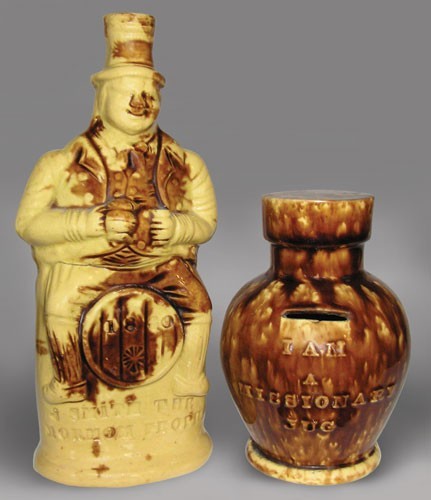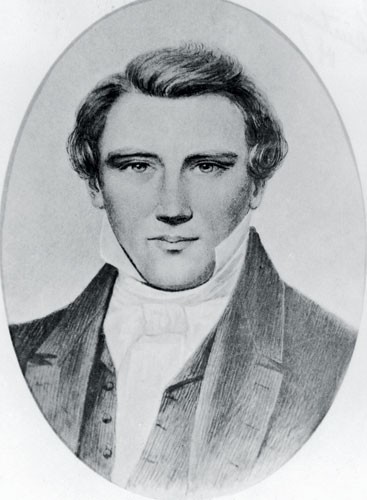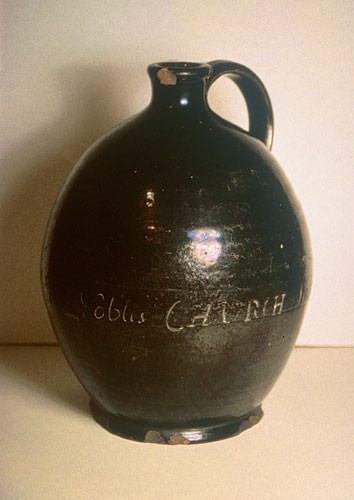
Flask and bank, mid-nineteenth century. Rockingham-glazed earthenware. Left: Probably English. H. 9". Right: English or American. H. 5 1/2". (Author’s collection; photo by author.)

Charles William Carter, Joseph Smith Jr. Etching, 1886. 5" x 7". (Courtesy, Church Archives, The Church of Jesus Christ of Latter-day Saints.)

Lithograph by Nagel and Weingaertner after C. G. Crehen, Martyrdom of Joseph and Hiram Smith in Carthage Jail, June 27, 1844 (New York, 1851). (Courtesy, Library of Congress, Prints and Photographs Division.)

Communion jug, attributed to Daniel Bayley, Newburyport, Massachusetts, 1763. Manganese-glazed earthenware. H. 10 1/2". Inscribed: “For the use of Mr. Noble’s CHURCH July 10, 1763.” (Courtesy, Old York Historical Society, York, Me.) This jug—one of the earliest dated pieces of American redware—was used to store wine for communion services at the Fifth Parish Congregational Church of Newbury, headed by Reverend Oliver Noble. It is the only documented example of eighteenth-century ecclesiastical redware produced in New England.

Bank, 2006. Tin. H. 4". Mark: on lid, “my MISSON SAVINGS BANK / I hope they call me on a mission”; on underside, “Made in China.” This modern version is currently being sold at the Brigham Young University Book Store in Salt Lake City, Utah. (Author’s collection; photo by author.)
